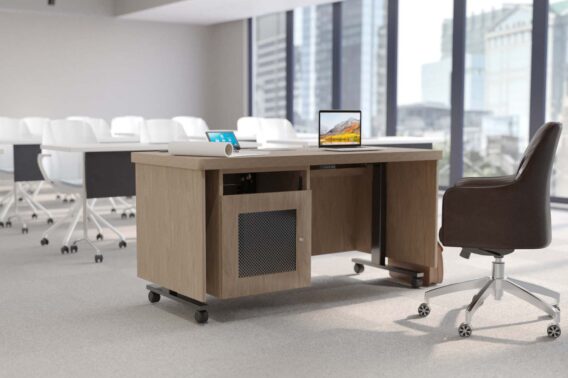In the post-pandemic era, the tidal wave of remote work has shown how the office has failed to meet the needs of its people. “Collaborative spaces,” “flex spaces,” and “hybrid” are all the trending buzz words when we now talk about workplace design. As we think about the office, organizations are reevaluating how workplace needs have changed with the evolution of open-concept floor plans. Organizations need to determine the new needs of employees in the post-pandemic world. Establishing what the needs are to make work effortless, especially identifying what the office can offer versus the home, will be key to good workplace design. The mindset of people today is that if they travel into the office it better be worth their time. People are looking for distinctive experiences that can only be offered at the office, and that the same tools and ease they get from working from home are also accessible at the office.
It’s pretty much undeniable that employees need flexible, collaborative spaces to easily connect with others – the in-person interactions they cannot get at home. However, not providing a dedicated workstation can be a deterrent to bringing people back to the office. Every worker still needs a functional place to focus that has the tools necessary for their job. From flexible collaboration to focused work, people are looking for a workplace design that is a complete holistic experience.
Create spaces for different workers
If people perceive that they have an easier time getting important work done at home versus the office, it makes coming into the office “to do work” pointless. At home, people can easily sit down at their personal desk with access to all the technology and equipment they need. With an open office, coming to work can be a hassle, and that doesn’t just mean the commute. For example, coming into an office that does not have dedicated workstations can leave people fighting to find a spot. When days are busy, it can mean limited availability for desks, which can lead to a wasted commute to the office. The struggle to find a spot to sit down and get work done makes coming into the office questionable. In addition to having to hunt for a desk space, the workstation also needs to be suited to their unique working needs. Not all jobs are the same, and the needs of different roles will not mirror each other.
The “Focused” Worker
Creating workspaces for the right experiences means understanding that the demands of each role will vary. You may find that most of your workforce is a “focused” worker, which means that their roles require them to have a designated workstation. Because most of their work is primarily done at their desk, this type of worker values having ease of access to the right technology, a place to store their belongings, and may also desire acoustical and visual privacy. Dedicated workstations allow employees to feel comfortable and confident that they can get work done better and faster than they could at home. For this to be true, this also means that the dedicated workstation should be equipped with technology such as a monitor, mouse, and keyboard. Having a dedicated desk not only saves time and energy but means having a spot someone can call their own. This allows people to feel comfortable storing their notes and equipment, so that they do not have to carry heavy items back and forth from home to the office. Dedicated desks that are built to employees’ needs can also make their lives easier. For example, if an employee is working on something confidential, they may not want to be working on it in an open-style floor plan for all to see. Having private office areas with soundproofing is crucial for those working on confidential projects. Desks that are equipped with lockable storage are also important for employees to feel comfortable leaving things at the office.
The “Collaborative” Worker
Other roles may have a work style that is “collaborative” meaning that their work may not necessarily require a dedicated workstation; however, there is a strong need for ease of access to collaborative spaces and desking solutions. This type of worker comes into the office with the intent to collaborate. This worker requires team spaces that invite engagement. The team spaces need to be flexible enough to support varying work modes, so people can easily move from engaging collaboration and conversation to focused work. These flexible environments should include flexible furniture solutions, which can be arranged and rearranged based on the type of work. Team environments need to be equipped with whiteboards and screens for in-person and virtual interactions. This worker requires a space that can flawlessly move from collaboration to individual work, and back to collaboration.
Final Thoughts
As we continue to navigate the return to the office, employers must continue to take into account the needs of their employees when creating policies as well as when they are designing their office.





